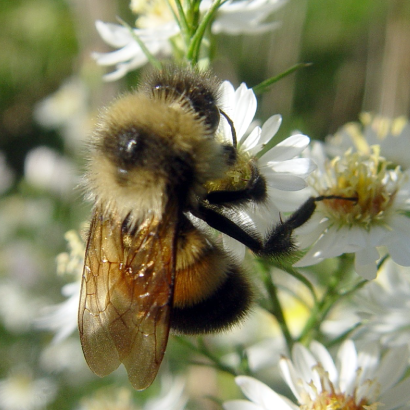
As the March issue of Parks & Recreation magazine was going to press with our article on the plight of the rusty patched bumblebee, an Executive Order by President Trump restricting implementation of federal regulations froze the listing of the rusty patched bumblebee as an endangered species for 60 days, a move that quickly brought a lawsuit filed by the Natural Resources Defense Council (NRDC).
Rebecca Riley, senior attorney with the Natural Resources Defense Council (NRDC) said in a public statement, “The Trump administration broke the law by blocking the rusty patched bumblebee from the endangered species list.” The basis of NRDC’s suit is that the final listing under the ESA was published in the Federal Register and no notice was given for the suspension for public review and comment as required by law.
Whether NRDC’s suit against the president’s Executive Order is to be held as legal or not is a matter for the courts to decide. Regardless of how the litigation is resolved, there has been great concern for the critically endangered rusty patched bumblebee, one of hundreds of species of wild bees that are threatened with local extirpation or even species extinction.
Rusty patched bumblebees were once found commonly and even abundantly throughout the East and Central United States, and their range extended through 30 states. However, the numbers and distribution of rusty patched bumblebees have declined almost 90 percent in less than 20 years, and they are now found in minimal numbers in disconnected populations in only 14 states. Rusty patched bumblebees have been described as the most critically endangered species in the entire United States.
The Xerces Society for Invertebrate Conservation, one of the leading groups in the country for bee and pollinator protection, brought a petition forward in 2013 to list the rusty patched bumblebee as a federally endangered species under the provisions of the Endangered Species Act (ESA). The petition was reviewed and granted, and the rusty patched bumblebee was listed in the Federal Register on January 11, 2017, seemingly the final step declaring this bee as a federally endangered species. Listing of a species invokes the substantial protections and requirements of the Endangered Species Act.
However, the president’s Executive Order halted the implementation of the ESA listing for a temporary 60 day period until March 21, 2017, for the purpose of “reviewing questions of fact, law and policy they raise.”
Groups that opposed the listing, such as the American Farm Bureau Federation, applauded the Executive Order, and said in a statement, “Now more than ever, it is time to reform the ESA to protect and ultimately recover threatened and endangered species. Reform is necessary because there are clear shortcomings associated with the upkeep and recovery rate of listed species.” However, environmental and conservation groups have spoken out in opposition, fearing that this temporary stay will have grave consequences. “We don’t think it is just a freeze,” Riley of NRDC told Popular Science magazine. “It is an opportunity for the Administration to revoke the rule entirely.”
When a species is officially listed, a number of actions are set in motion, including the development of a species recovery plan, designation of critical habitat and restrictions on incidental taking of the species. Without the listing, it is unclear what impact the president’s Executive Order will have on the recovery plan for the rusty patched bumblebee.
The potential extinction of the Rusty patched bumblebee is not just another sad story of disappearing wildlife. It is a cautionary tale that warns us that important components of our natural ecosystems can disappear right before our eyes if we are not vigilant in their conservation. Let us hope that such is not the case for the Rusty patched bumblebee.
The decline of the rusty patched bumblebee presents a real opportunity for parks to contribute to saving this species, much in the way that thousands of parks are already creating habitat for the monarch butterfly. For more information on how, see the March issue of Parks & Recreation magazine, and visit the Xerces Society website for excellent information on the life-history and conservation recommendations for the rusty patched bumblebee.
For info on how a species is listed as endangered and what such a listing means, visit the U.S. Fish and Wildlife Service website.
Photo Credit: Ilona L, Flickr Creative Commons
Richard J. Dolesh is NRPA’s Vice President of Strategic Initiatives.



